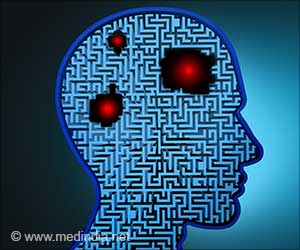It is important to have an improved understanding of the role of female sex hormones on the drivers and symptoms of premenstrual dysphoric disorder (PMDD).

PMDD is moderately heritable, however to date, no genetic marker has consistently been associated with the disorder, nor have abnormalities in levels of sex hormones been found.
Professor Inger Sundström Poromaa, Professor of Obstetrics and Gynaecology at the Department of Women's and Children's Health, Uppsala University, Sweden presented findings from neuroimaging studies in patients with PMDD at the 26th ECNP Congress. The results suggested that brain activity across the menstrual cycle is different between healthy controls and women with PMDD, highlighting the importance of hormone fluctuations in this disorder.
Fifteen women with PMDD underwent neuroimaging using functional magnetic resonance imaging (fMRI) in the late follicular and late luteal phases of their menstrual cycle. Women completed an emotional processing task related to anxiety control. A total of 14 controls received the same battery of neuroimaging tests and results were compared between the two groups.
Specifically, results showed that when women with PMDD were exposed to emotional processing, they showed higher activation of the amygdala region of the brain in the follicular phase, relating to impaired anxiety control compared to healthy controls.
The increased amygdala activation in response to emotional stimuli in the follicular phase was highly correlated with the very low, follicular phase, progesterone concentrations. "Our interpretation is that PMDD women are indeed hyper-responsive to even low progesterone levels, and that the amygdala successively habituates to the increasing luteal phase progesterone levels." However, in some patients with PMDD, enhanced emotional responses, due to amygdala activation, were also seen in the luteal phase. "In addition, patients with PMDD who also have high scores of anxiety, display increased emotion-induced amygdala reactivity in the luteal phase too."
In addition, Professor Sundström Poromaa also found that amygdala reactivity in PMDD is differently influenced by the content of the emotional stimuli. Women with PMDD displayed increased amygdala reactivity to social stimuli as compared to non-social stimuli in the luteal phase.
Effectively, these results suggest that although PMDD women clinically only have anxiety in the luteal phase, the anxiety mechanisms may be different in the early and late luteal phase. "Clearly they have an amygdala that is easily activated once progesterone levels start to increase in the early luteal phase. The higher amygdala activity in the follicular phase may also be a more general vulnerability mark in PMDD women," explained Professor Sundström Poromaa.
Furthermore, the researchers found that women with PMDD who were carriers of the BDNF Val66Met risk genetic mutation had lower activation of the fronto-cingulate cortex region in the luteal phase, suggesting difficulty with control of anxiety by the brain.
Professor Sundström Poromaa explained why their research was particularly important for many women during reproductive years. She noted that anxiety and depression disorders were twice as common in women, and major depressive disorder was the leading cause of disease burden in 15 to 44-year-old women. "The sex bias for depressive disorders is not evident until after puberty, and this suggests a possible role for sex hormones in the manifestation of increased risk for these disorders in women."
"PMDD is an important disorder in this context as it may be used to disentangle the complex interactions between sex hormones and mood, ultimately helping us to understand the female preponderance for mood disorders," she added.
The research conducted by the Uppsala group may also have implications for women with anxiety and depressive disorders who require oral contraception.
"To date, very little emphasis has been put into evaluating the best possible hormonal contraception, with no or positive impact on mood, in women suffering from anxiety and mood disorders. Ongoing clinical trials with low-dose estrogen oral contraceptives will shed light on their usefulness in women with mood disorders."
Finally, while women with PMDD may benefit from serotonin antidepressant treatment, many women discontinue treatment or request treatments that better target the hormonal causes of the disorder. The research of Professor Sundström Poromaa and her team may aid in developing new treatment strategies for affected women.
Source-Eurekalert














